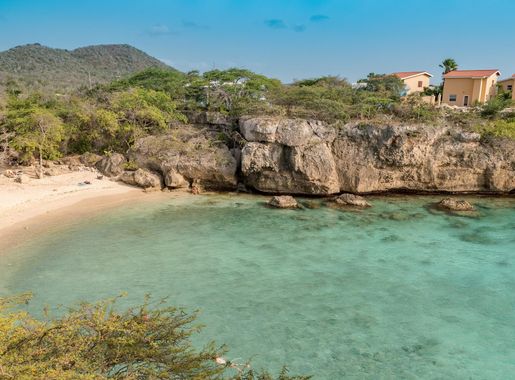
Playa Lagun: Curacao's Secluded Gem
Discover Playa Lagun in Curacao, where serene beaches, vibrant marine life, and local charm create an unforgettable tropical escape.
Playa Lagun is a hidden paradise nestled on the western coast of Curacao. This small, unspoiled beach is set within a cozy bay surrounded by steep cliffs, creating a dreamy, secluded atmosphere that feels like a world away from the island's bustling tourist hubs. The calm, clear waters make it an ideal spot for both swimming and snorkeling, where vibrant marine life and colorful coral reefs await just a few meters from the shore. For those seeking a more relaxed experience, the beach offers plenty of shade under the natural canopy of trees. The local fishermen bring in their daily catch in the mornings, providing a charming glimpse into the island's traditional way of life. Visitors can savor a fresh seafood meal at the nearby beachfront restaurants while enjoying breathtaking views of the bay. Playa Lagun is not just about the beach; it is also a gateway to some of Curacao's best hiking trails. The surrounding cliffs offer stunning vantage points for panoramic views and photo opportunities. Whether you're an adventurer looking to explore the underwater world or someone who simply wants to unwind in a serene setting, Playa Lagun promises an unforgettable experience.
Local tips in Playa Lagun
- Visit early in the morning to watch local fishermen bring in their catch.
- Bring your own snorkeling gear to explore the underwater world.
- Pack sunscreen and insect repellent; the natural setting means you might encounter bugs.
- Wear comfortable shoes if you plan to hike the surrounding cliffs.
- Consider renting a car for easy access to this secluded beach.
Playa Lagun: Curacao's Secluded Gem
Playa Lagun is a hidden paradise nestled on the western coast of Curacao. This small, unspoiled beach is set within a cozy bay surrounded by steep cliffs, creating a dreamy, secluded atmosphere that feels like a world away from the island's bustling tourist hubs. The calm, clear waters make it an ideal spot for both swimming and snorkeling, where vibrant marine life and colorful coral reefs await just a few meters from the shore. For those seeking a more relaxed experience, the beach offers plenty of shade under the natural canopy of trees. The local fishermen bring in their daily catch in the mornings, providing a charming glimpse into the island's traditional way of life. Visitors can savor a fresh seafood meal at the nearby beachfront restaurants while enjoying breathtaking views of the bay. Playa Lagun is not just about the beach; it is also a gateway to some of Curacao's best hiking trails. The surrounding cliffs offer stunning vantage points for panoramic views and photo opportunities. Whether you're an adventurer looking to explore the underwater world or someone who simply wants to unwind in a serene setting, Playa Lagun promises an unforgettable experience.
When is the best time to go to Playa Lagun?
Iconic landmarks you can’t miss
Queen Emma Bridge
Explore the enchanting Queen Emma Bridge in Willemstad, a stunning pedestrian walkway connecting vibrant historic districts with breathtaking views.

Boka Pistol
Explore the breathtaking cliffs and crystal-clear waters of Boka Pistol in Curaçao, a stunning natural attraction that captures the island's beauty.
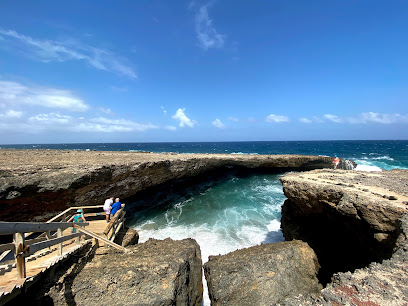
Fort Beekenburg
Experience the rich history and stunning views at Fort Beekenburg, a must-visit historical landmark in Curaçao's Jan Thiel.
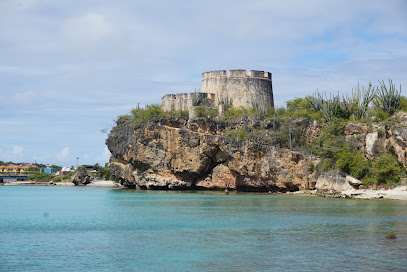
Boka Wandomi
Discover the stunning coastal beauty of Boka Wandomi in Curaçao, a serene escape perfect for relaxation and photography amidst turquoise waters.
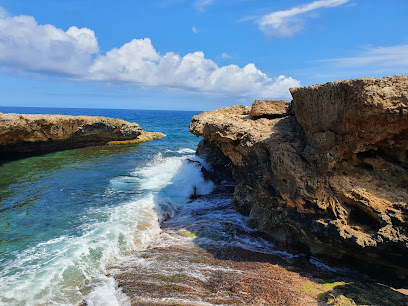
Curaçao Sign
Explore the vibrant Curaçao Sign in Willemstad, a colorful landmark symbolizing the island's rich culture and inviting atmosphere.
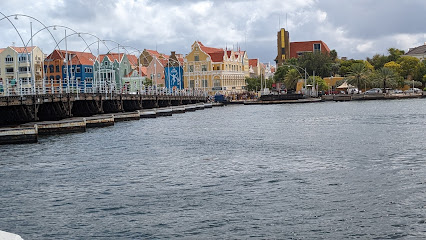
Manor Knip
Discover the historical and natural beauty of Manor Knip, a captivating heritage building in Curaçao, perfect for history enthusiasts and nature lovers.

Forti Boka Sami
Discover local flavors and stunning views at Forti Boka Sami, a culinary gem in Sint Michiel, Curaçao.
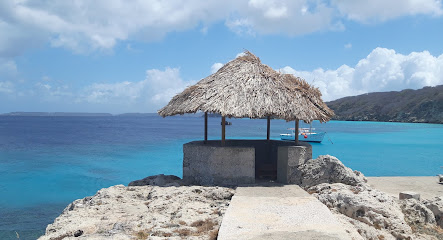
Punda Love Heart
Experience the vibrant charm of Punda Love Heart in Willemstad, Curaçao, a perfect blend of culture, history, and stunning views.
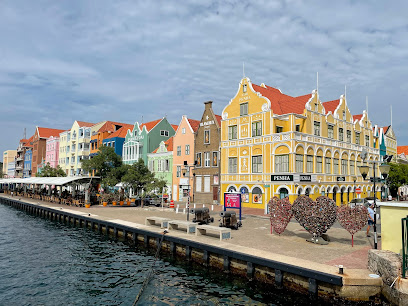
Blue Room Cave
Experience the breathtaking beauty of Blue Room Cave, a stunning natural wonder in Curaçao, perfect for adventure seekers and nature lovers alike.

Playa Largu
Experience the serene beauty of Playa Largu, a hidden gem in Willemstad, Curaçao, perfect for relaxation and adventure on your tropical getaway.
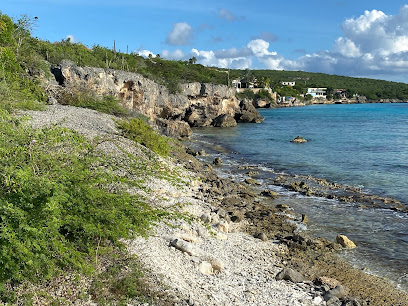
Fun Places
Explore unique experiences and adventures with Fun Places, your dedicated travel agency and tour operator for unforgettable journeys.
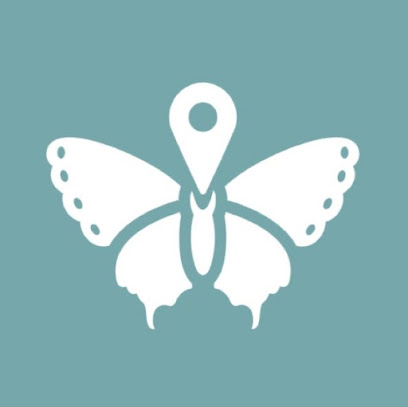
Lagun Blanku
Explore the tranquility of Lagun Blanku, a hidden national reserve in Curaçao, where nature and beauty unite in a serene escape.
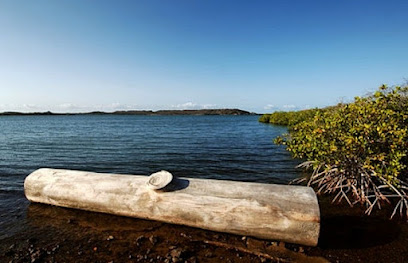
Seru Bientu
Explore the historical charm and breathtaking views of Seru Bientu, a must-visit landmark in Lagun, Curaçao, rich in culture and nature.
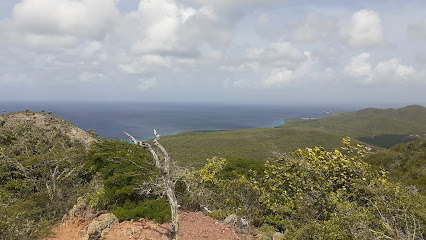
Beeldentuin Blue Bay
Explore the enchanting Beeldentuin Blue Bay, a sculpture garden in Curaçao where art meets breathtaking landscapes for an unforgettable experience.
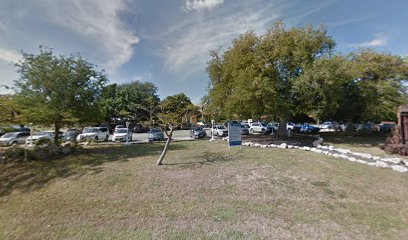
Fort Piscadera
Explore the historical beauty of Fort Piscadera in Curaçao, a remarkable site steeped in colonial history and stunning coastal views.

Essential places to dine
Zanzibar Beach & Restaurant
Experience exquisite dining at Zanzibar Beach & Restaurant in Curaçao – where culinary delights meet breathtaking ocean views.
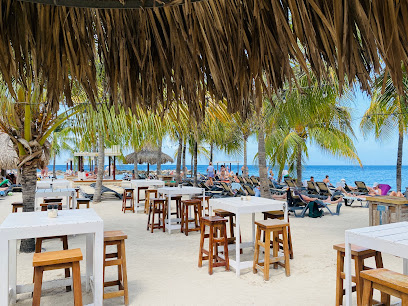
Pirate Bay Curaçao Beach Club and Restaurant
Experience the essence of island life at Pirate Bay Curaçao Beach Club & Restaurant—where culinary delights meet stunning ocean views.
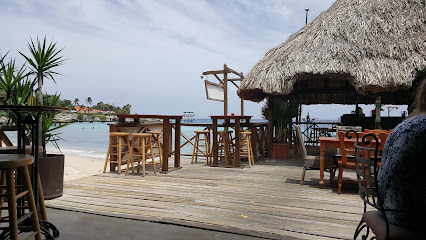
Restaurant & Café Gouverneur De Rouville
Experience exquisite local cuisine and stunning harbor views at Restaurant & Café Gouverneur De Rouville in Willemstad, Curaçao.
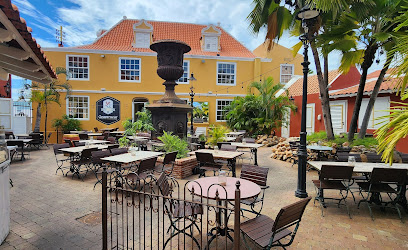
Karakter Beach - Lounge - Restaurant
Experience exquisite dining with stunning ocean views at Karakter Beach in Curaçao - where culinary delights meet tropical paradise.
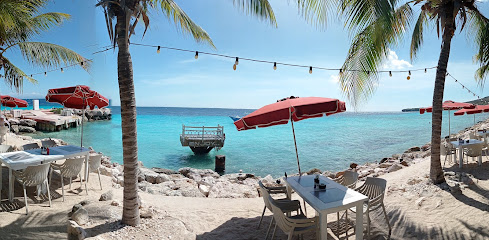
Brisa Do Mar
Experience authentic Caribbean cuisine at Brisa Do Mar in Jan Thiel - where every meal is a celebration of flavor.
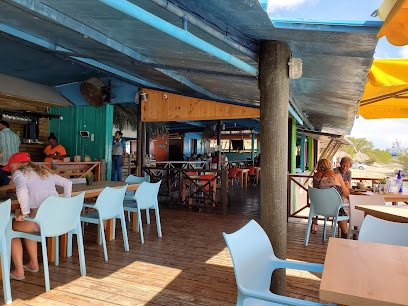
Saint Tropez Ocean Club
Experience exquisite dining with stunning ocean views at Saint Tropez Ocean Club in Willemstad - a culinary gem on Curaçao's vibrant coast.
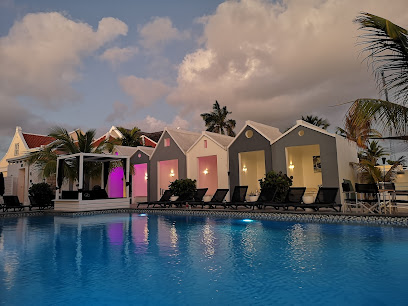
Eetcafé De Buurvrouw
Discover authentic Caribbean flavors at Eetcafé De Buurvrouw in Curaçao – where local cuisine meets warm hospitality.
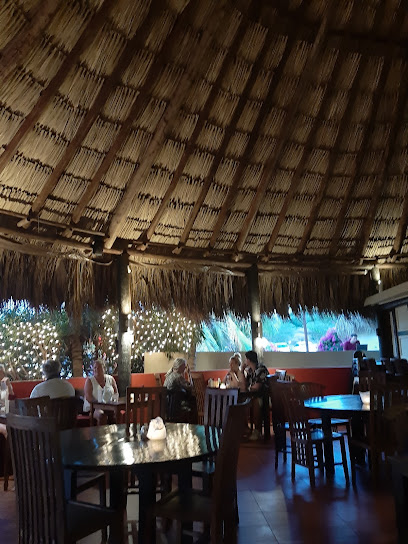
Toko Williwood
Discover the vibrant flavors of Curaçao at Toko Williwood – your go-to spot for soul food and local delights in Sint Willibrordus.

Restaurant Playa Forti
Experience authentic Caribbean flavors at Restaurant Playa Forti in Sabana Westpunt, Curaçao - where culinary excellence meets breathtaking ocean views.

Jaanchie Restaurant
Discover authentic Caribbean cuisine at Jaanchie Restaurant in Sabana Westpunt - a culinary gem in beautiful Curaçao.
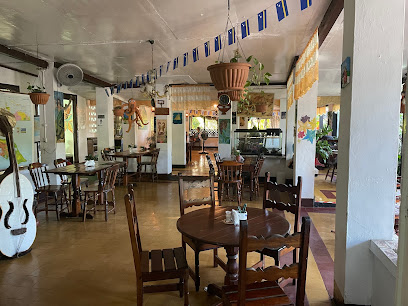
Bali Restaurant Grote Berg
Experience the vibrant flavors of Curaçao at Bali Restaurant Grote Berg - where culinary excellence meets tropical charm.
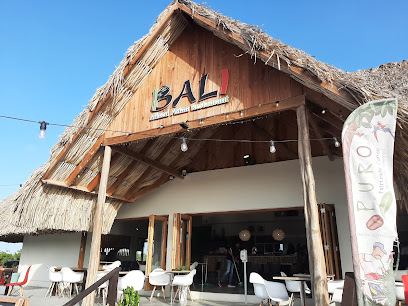
Chill Beach Bar & Grill
Discover Chill Beach Bar & Grill in Willemstad: Where stunning views meet delicious cuisine in a vibrant Caribbean atmosphere.
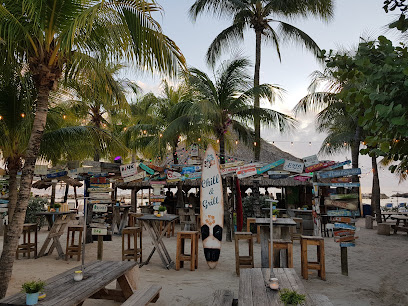
MOOD Beach Curacao
Discover tropical bliss at MOOD Beach Curacao - where delicious cuisine meets stunning Caribbean views.
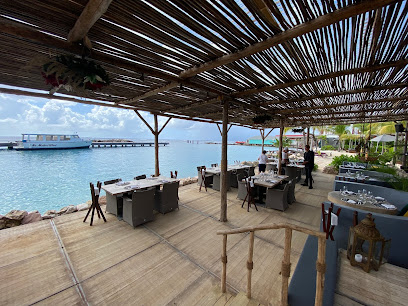
Blue View Sunset Terrace
Experience unforgettable sunsets while indulging in delicious Caribbean cuisine at Blue View Sunset Terrace in Curaçao.
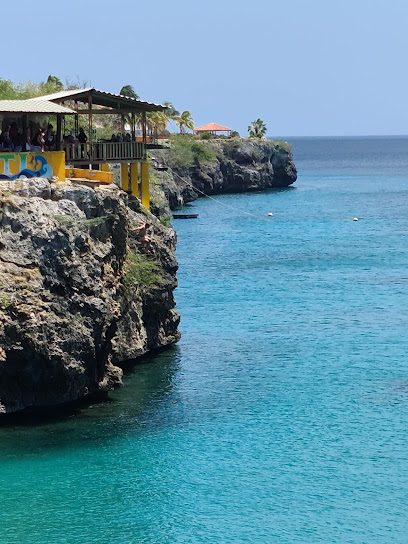
Shelterrock Paradise
Experience the vibrant flavors and rhythms at Shelterrock Paradise, where delicious cuisine meets captivating live music in beautiful Curaçao.
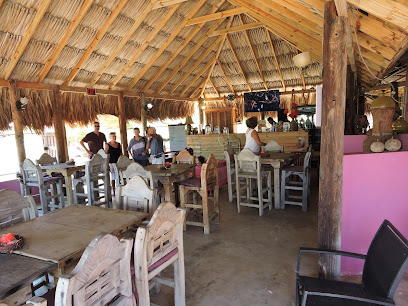
Markets, malls and hidden boutiques
Sambil Curacao
Experience the ultimate shopping paradise at Sambil Curacao, where vibrant retail, dining, and entertainment come together in a lively atmosphere.
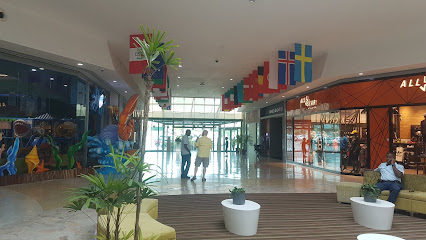
La Curacao
Explore La Curacao in Willemstad for a unique shopping experience combining local culture with a wide range of products.
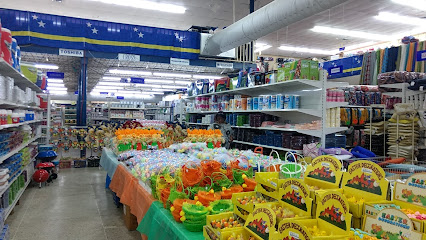
Penha Duty Free Curacao in Punda
Discover a world of luxury at Penha Duty Free in Curacao, featuring exquisite perfumes, cosmetics, and fine liquors in a vibrant shopping atmosphere.
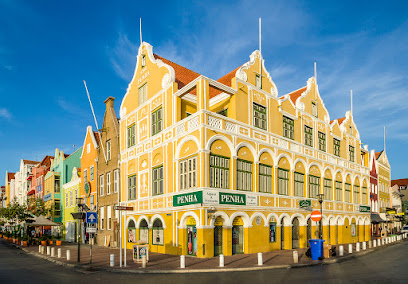
Chichi Shop Punda
Discover the essence of Curaçao at Chichi Shop Punda, where every souvenir tells a story and every visit is a cultural experience.
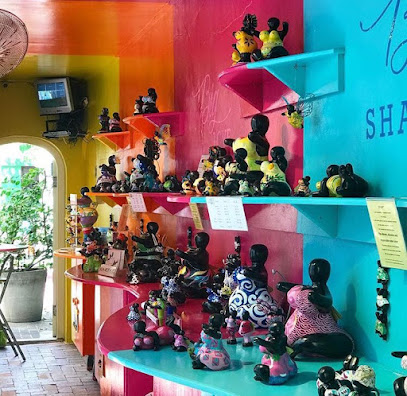
Santa Cruz Chinese Market
Discover the vibrant flavors of Curaçao at Santa Cruz Chinese Market, where local and Asian culinary delights await your exploration.

Bahia Diving
Experience the vibrant underwater world of Curaçao at Bahia Diving, where adventure and exploration await every diver.
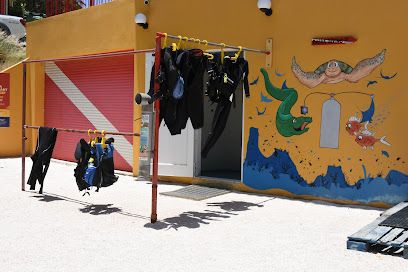
Playa Knip Smoothies
Discover the tropical flavors of Playa Knip Smoothies, where refreshing treats meet the stunning beauty of Curaçao's coastline.
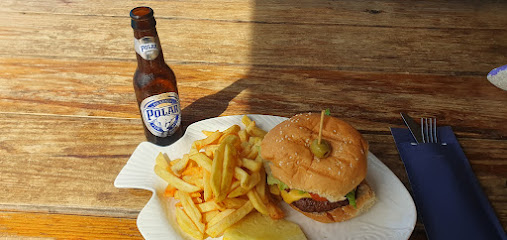
Jolly Fashion by Prakash
Explore Jolly Fashion by Prakash - Your ultimate shopping destination for unique clothing and accessories in Willemstad, Curaçao.
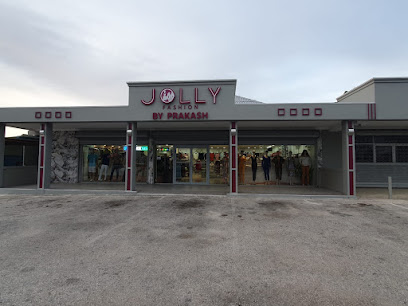
Island Treasures
Explore Island Treasures in Willemstad for unique souvenirs that embody the vibrant culture and artistry of Curaçao.
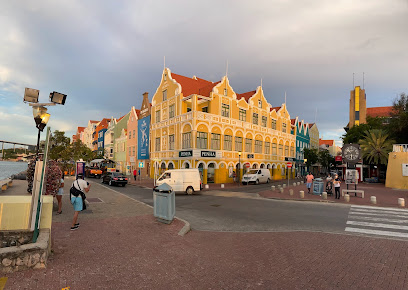
I love Curacao #The hidden beauty of the Caribbean
Explore authentic Curacao treasures at 'I Love Curacao' – a hidden gem in Willemstad for unique souvenirs and local crafts.

Britt Shop
Discover unique gifts and local crafts at Britt Shop, the perfect spot for souvenirs in Curacao Hato International.
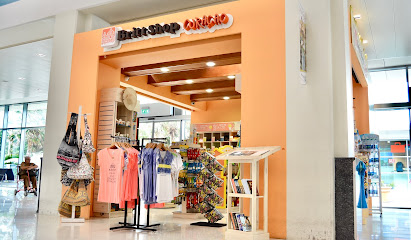
Unique point
Explore Unique Point in Willemstad for trendy men's fashion that combines local culture with international style.
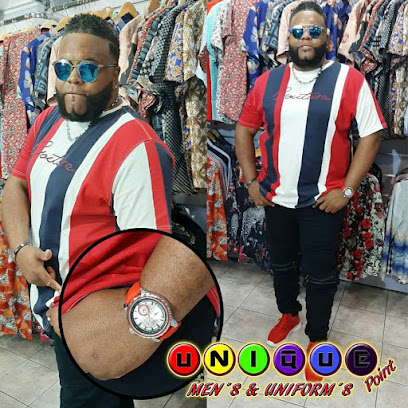
AURA FASHION
Discover the vibrant style of Curaçao at AURA FASHION, a women's clothing store where fashion meets affordability in the heart of Willemstad.
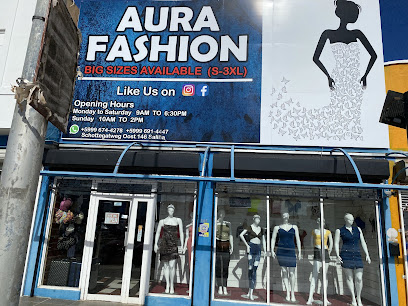
Dolce Vita Boutique
Discover unique fashion pieces at Dolce Vita Boutique in Willemstad, Curaçao - a stylish shopping destination for every trendsetter.

Memories Curacao
Explore Memories Curacao: Uncover a vibrant selection of local crafts and unique souvenirs that embody the spirit of the island.

Essential bars & hidden hideouts
Daaibooi Beach Bar
Daaibooi Beach Bar: Your ultimate destination for relaxation and tropical delights in Curaçao's stunning beach setting.

Shelterrock Paradise
Discover the lively charm of Shelterrock Paradise, where delicious cuisine meets vibrant live music in the heart of Curaçao.

Netto Bar
Experience the vibrant nightlife of Willemstad at Netto Bar, where local flavors and lively atmosphere come together for an unforgettable evening.
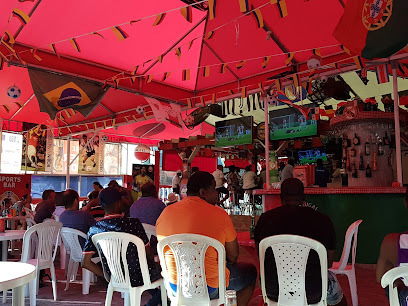
Bahia Beach Bar & Restaurant
Discover culinary delights at Bahia Beach Bar & Restaurant, where stunning ocean views meet delicious Caribbean flavors in a relaxed atmosphere.

Discover Lagun
Experience the vibrant flavors of Caribbean cuisine at Discover Lagun, a culinary gem in the heart of Curaçao, perfect for food lovers and tourists.
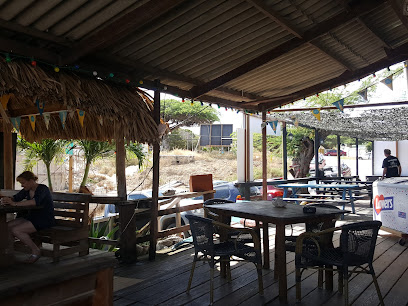
Koraal Rooftop Terrace
Experience the breathtaking views and exquisite flavors at Koraal Rooftop Terrace, a must-visit culinary destination in Curaçao.

Captain's Sportsbar & Grill
Experience the excitement of live sports and mouth-watering cuisine at Captain's Sportsbar & Grill in Willemstad, Curaçao.

La Fogata Terrace & Sports Bar
Experience the vibrant flavors and lively atmosphere at La Fogata Terrace & Sports Bar in Willemstad, Curaçao, an unforgettable culinary destination for food and sports lovers.

The World Best Mojito Bar
Discover the Caribbean's best mojitos at The World Best Mojito Bar in Willemstad, a vibrant spot for cocktails and good vibes.
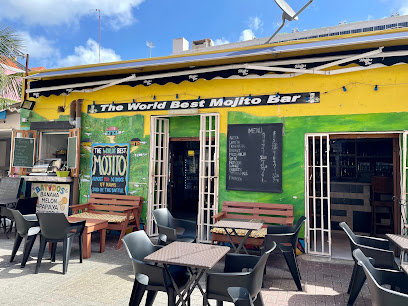
Cast away beach bar curacao
Discover the laid-back charm of Cast Away Beach Bar in Curaçao, where stunning ocean views and delicious cuisine create the perfect tropical escape.
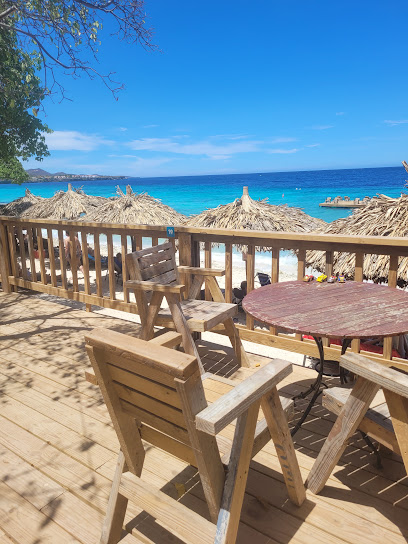
Blend Beach Bar @ Blue Bay Curaçao Golf & Beach Resort
Discover the perfect blend of relaxation and tropical flavors at Blend Beach Bar, nestled in the stunning Blue Bay Curaçao Golf & Beach Resort.
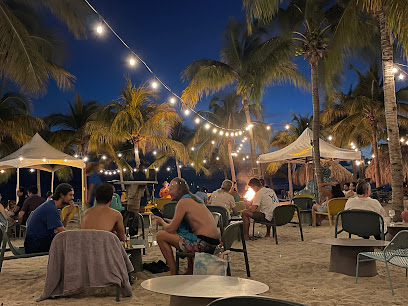
Infinity Pool Bar & Grill
Savor the flavors of the Caribbean at the Infinity Pool Bar & Grill in Willemstad, where every meal is a feast for the senses.
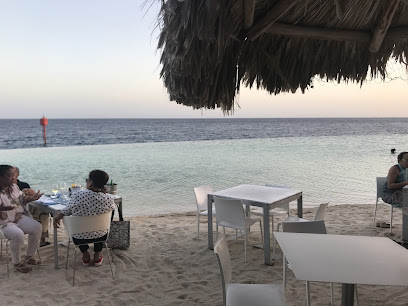
Flamingo Beach Bar
Experience the vibrant atmosphere and stunning ocean views at Flamingo Beach Bar in Curaçao, where relaxation meets lively Caribbean nightlife.
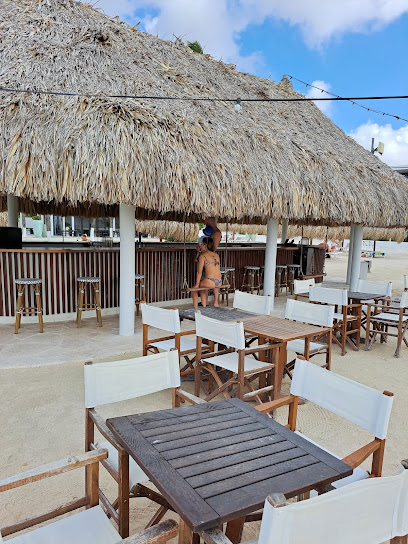
Coco Pool Bar
Discover the vibrant atmosphere of Coco Pool Bar in Willemstad, Curaçao, where relaxation meets refreshing cocktails by the poolside.
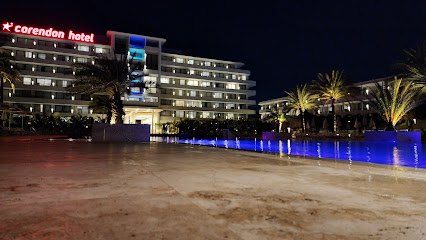
Tabú Bar & Bites Curacao
Discover the vibrant nightlife at Tabú Bar & Bites, where exquisite cocktails meet flavorful bites in the heart of Curaçao.
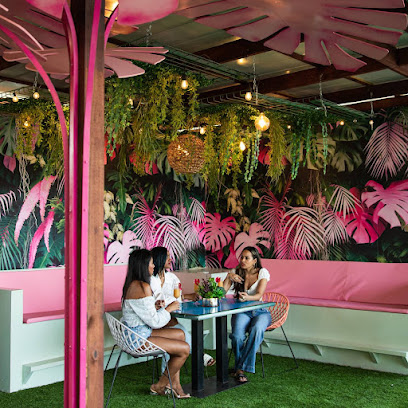
Local Phrases about Playa Lagun
-
- HelloBon dia
[bon dee-ah] - GoodbyeAyo
[eye-yo] - YesSi
[see] - NoNo
[no] - Please/You're welcomePor fabor
[por fah-bor] - Thank youDanki
[dan-kee] - Excuse me/SorryDiskulpa
[dee-skool-pah] - How are you?Kon ta bai?
[kon tah by] - Fine. And you?Bon. I boso?
[bon. ee boh-soh] - Do you speak English?Bo ta papia Ingles?
[boh tah pah-pee-ah een-gles] - I don't understandMi no ta kompronde
[mee noh tah kohm-prohn-deh]
- HelloBon dia
-
- I'd like to see the menu, pleaseMi ke mira e menu, por fabor
[mee keh mee-rah eh men-oo, por fah-bor] - I don't eat meatMi no kome karni
[mee noh koh-meh kar-nee] - Cheers!Salud!
[sah-lood] - I would like to pay, pleaseMi ke paga, por fabor
[mee keh pah-gah, por fah-bor]
- I'd like to see the menu, pleaseMi ke mira e menu, por fabor
-
- Help!Yuda!
[yoo-dah] - Go away!Bai for!
[by for] - Call the Police!Yama polis!
[yah-mah poh-lees] - Call a doctor!Yama un dokter!
[yah-mah oon dohk-ter] - I'm lostMi a hasi perdi
[mee ah hah-see pehr-dee] - I'm illMi ta malu
[mee tah mah-loo]
- Help!Yuda!
-
- I'd like to buy...Mi ke kumpra...
[mee keh koom-prah] - I'm just lookingMi ta mira solamente
[mee tah mee-rah soh-lah-men-teh] - How much is it?Kuantu e kostu?
[kwan-too eh kohs-too] - That's too expensiveEsaki ta muchu karo
[eh-sah-kee tah moo-choo kah-roh] - Can you lower the price?Bo por baha e preis?
[boh por bah-hah eh preis]
- I'd like to buy...Mi ke kumpra...
-
- What time is it?Kuantu ora e ta?
[kwan-too oh-rah eh tah] - It's one o'clockE ta un ora
[eh tah oon oh-rah] - Half past (10)Mitad di (10)
[mee-tah dee ten] - MorningMarduga
[mar-doo-gah] - AfternoonAtardi
[ah-tar-dee] - EveningAnochi
[ah-noh-chee] - YesterdayAnoche
[ah-noh-cheh] - TodayAwe
[ah-weh] - TomorrowMañana
[mah-nyah-nah] - 1Uno
[oo-no] - 2Doso
[doh-soh] - 3Tres
[trehs] - 4Kuater
[kwah-ter] - 5Sinku
[seen-koo] - 6Sies
[see-ehs] - 7Siete
[syeh-teh] - 8Ocho
[oh-choh] - 9Nuebe
[nweh-beh] - 10Dies
[dee-ehs]
- What time is it?Kuantu ora e ta?
-
- Where's a/the...?Unda tin un/e...
[oon-dah teen oon/eh] - What's the address?Kual ta e adres?
[koo-ahl tah eh ah-dres] - Can you show me (on the map)?Bo por mustra mi (riba e mapa)?
[boh por moos-trah mee (ree-bah eh mah-pah)] - When's the next (bus)?Kon ora e proximo (bus)?
[kon oh-rah eh prok-see-moh (boos)] - A ticket (to ....)Un tiki (pa ....)
[oon tee-kee (pah)]
- Where's a/the...?Unda tin un/e...
History of Playa Lagun
-
Long before European explorers set foot on Curacao, the island was inhabited by the Arawak and Caquetio Indigenous peoples. Playa Lagun, with its rich marine life and fertile land, was an important settlement area. These early inhabitants left behind petroglyphs and artifacts which can still be found in the vicinity, offering a glimpse into their maritime culture and agricultural practices.
-
In 1499, Spanish explorers under the command of Alonso de Ojeda and Amerigo Vespucci arrived in Curacao. They named the island 'Isla de los Gigantes' due to the tall stature of the Indigenous people they encountered. Playa Lagun, with its strategic coastal location, became a significant spot for the Spanish, who utilized it as a fishing and trading outpost.
-
In 1634, the Dutch West India Company took control of Curacao from the Spanish. Recognizing the strategic importance of Playa Lagun, the Dutch established fortifications in the area to protect against potential invasions and to safeguard their burgeoning trade routes. Remnants of these fortifications can still be explored, offering visitors a tangible connection to the island's colonial past.
-
During the 17th and 18th centuries, Curacao became a central hub in the transatlantic slave trade. Playa Lagun was surrounded by several plantations that utilized enslaved African labor. These plantations produced goods such as salt, indigo, and dyewood. The painful history of slavery in the area is remembered through local museums and historical sites, where the stories of the enslaved individuals are honored.
-
Slavery was officially abolished in Curacao on July 1, 1863. This monumental event led to significant social and economic changes in Playa Lagun and the rest of the island. Freed individuals established their own communities and contributed to the cultural and economic development of the area. Annual celebrations and remembrances are held to honor this pivotal moment in history.
-
Throughout the 20th century, Playa Lagun transitioned from an agricultural hub to a sought-after tourist destination. The natural beauty of its beaches, cliffs, and underwater life attracted visitors from around the world. Infrastructure improvements, such as the construction of roads and accommodations, were made to support the growing tourism industry, transforming Playa Lagun into the serene and picturesque locale it is known for today.
-
In recent decades, Playa Lagun has become a focal point for marine conservation efforts. Local and international organizations collaborate to protect the area's coral reefs and marine biodiversity. Initiatives include sustainable tourism practices, reef restoration projects, and public education campaigns. These efforts ensure that Playa Lagun's natural beauty and ecological significance are preserved for future generations.
Playa Lagun Essentials
-
Playa Lagun is located on the northwest coast of Curacao. The nearest international airport is Hato International Airport, approximately 30 kilometers away. From the airport, you can rent a car, take a taxi, or use a shuttle service to reach Playa Lagun. The drive typically takes around 40 minutes via the Weg Naar Westpunt road.
-
While Playa Lagun itself is small and walkable, exploring the wider area is best done by car. Car rentals are available at the airport and in Willemstad. For those preferring public transport, there are buses that connect Playa Lagun with other parts of the island, though they may not be frequent. Taxis are also an option, but it's advisable to agree on a fare before starting your journey.
-
The official currency of Curacao is the Netherlands Antillean Guilder (ANG), but US dollars are widely accepted. Major credit cards are accepted in most hotels, restaurants, and shops. ATMs are available in nearby towns and offer cash withdrawals in both ANG and USD. It is advisable to carry some cash for smaller establishments and local markets.
-
Playa Lagun is generally safe for tourists. However, it is recommended to take standard precautions. Avoid leaving valuables unattended on the beach and be cautious when walking alone at night. Certain areas in Willemstad have higher crime rates and tourists are advised to stay vigilant, particularly in the Punda and Otrobanda districts at night.
-
In case of emergency, dial 911 for immediate assistance. The nearest medical facilities are in Willemstad, approximately 40 minutes away by car. It is highly recommended to have travel insurance that covers medical emergencies. Local pharmacies in nearby towns can provide over-the-counter medications for minor health issues.
-
Fashion: Do wear lightweight clothing suitable for a tropical climate. Avoid overly revealing swimwear when not on the beach. Religion: Do respect local customs, especially when visiting religious sites. Dress modestly and follow any posted guidelines. Public Transport: Do be patient as buses may not run on a strict schedule. Don't eat or drink on public transport. Greetings: Do greet people with a smile and a simple 'Bon Bini' (Welcome) or 'Kon ta bai?' (How are you?). Eating & Drinking: Do try local dishes like 'keshi yena' and fresh seafood. Don't refuse hospitality, as it is considered impolite.
-
To experience Playa Lagun like a local, visit the fishermen in the early morning as they bring in their catch. Engage with locals at small eateries and try freshly prepared meals. Snorkeling and diving are popular activities; renting gear locally allows you to discover hidden underwater gems. Don't miss the stunning sunsets from the beach or nearby cliffs, which are a favorite among locals.
Nearby Cities to Playa Lagun
-
Things To Do in Westpunt
-
Things To Do in Soto
-
Things To Do in Barber
-
Things To Do in Sint Michiel
-
Things To Do in Julianadorp
-
Things To Do in Willemstad
-
Things To Do in San Nicolas
-
Things To Do in Savaneta
-
Things To Do in Santa Cruz
-
Things To Do in Pos Chiquito
-
Things To Do in Paradera
-
Things To Do in Sero Blanco
-
Things To Do in Tanki Leendert
-
Things To Do in Oranjestad
-
Things To Do in Noord

